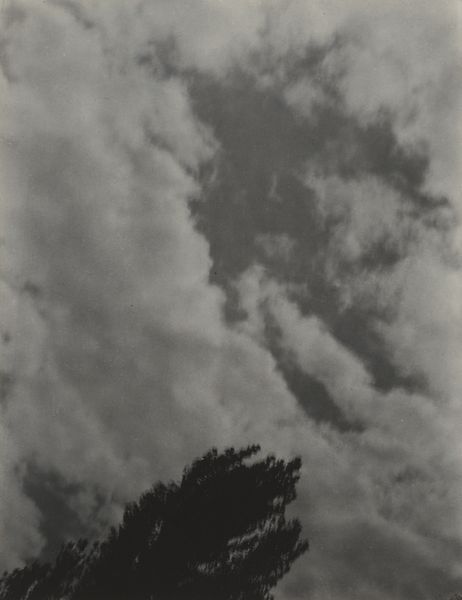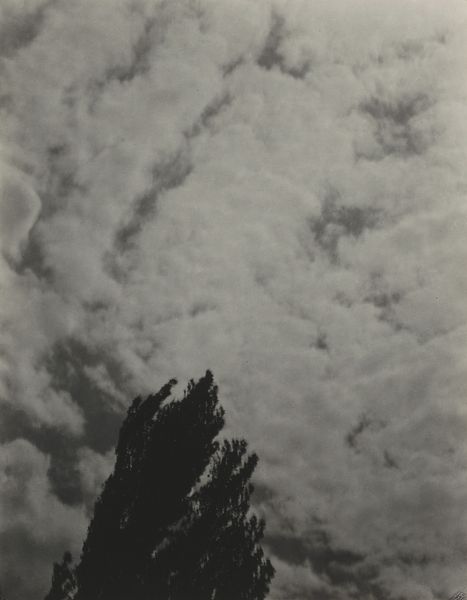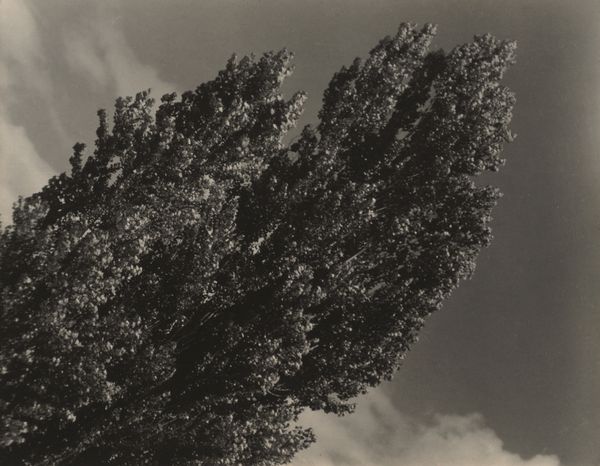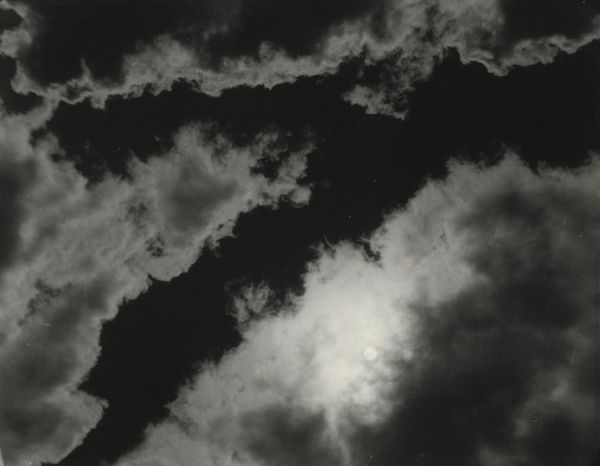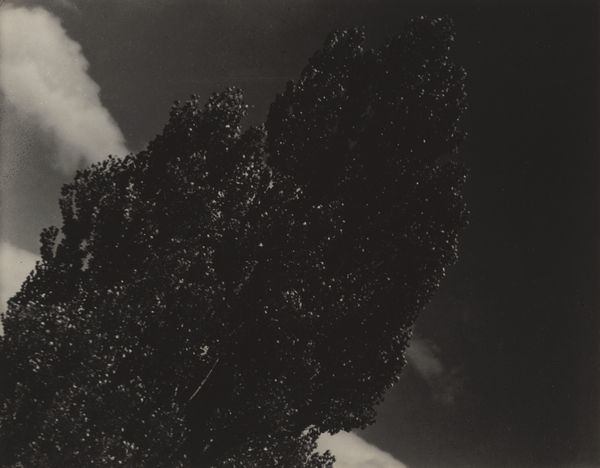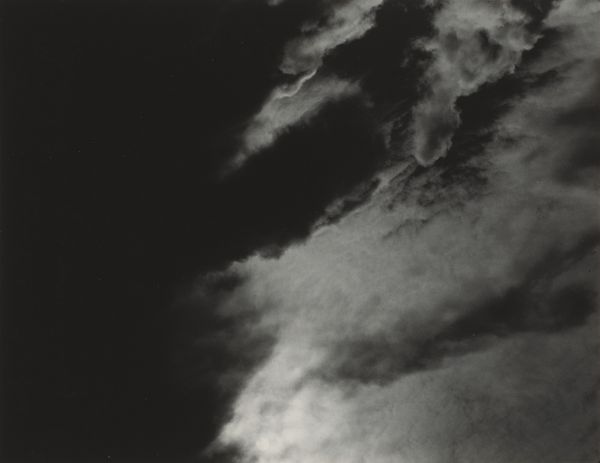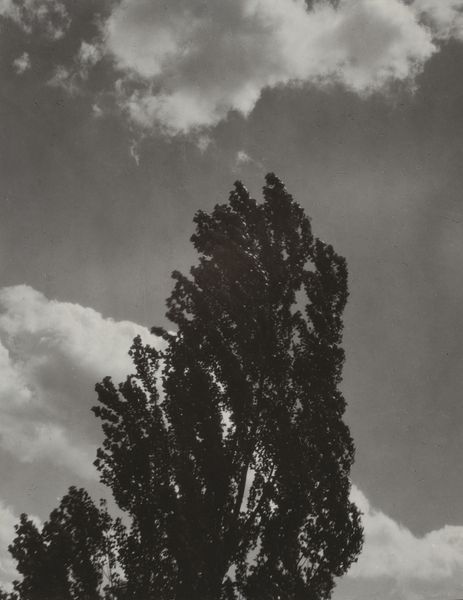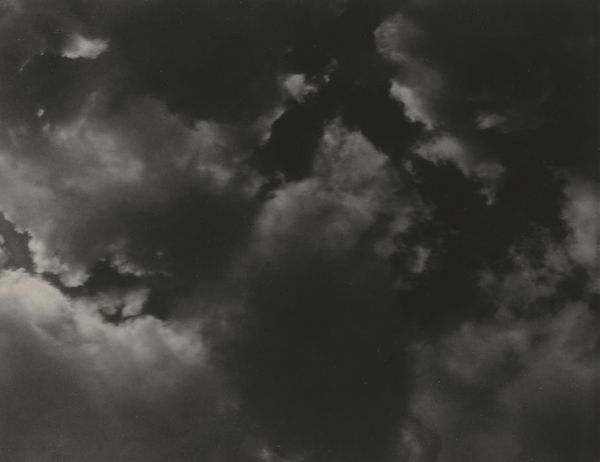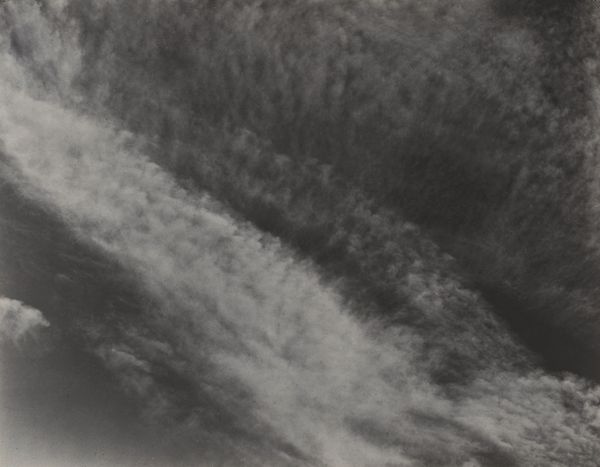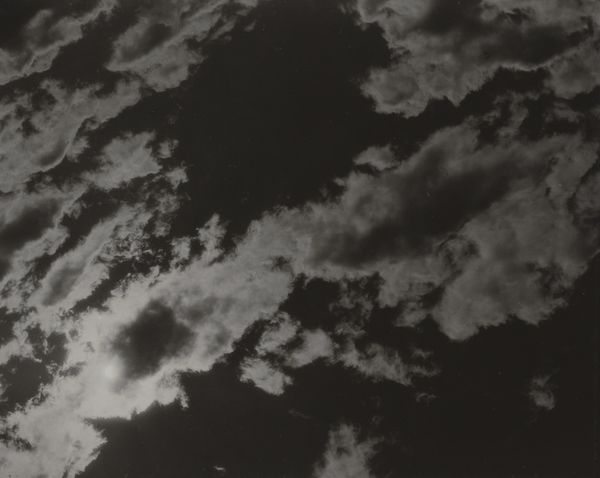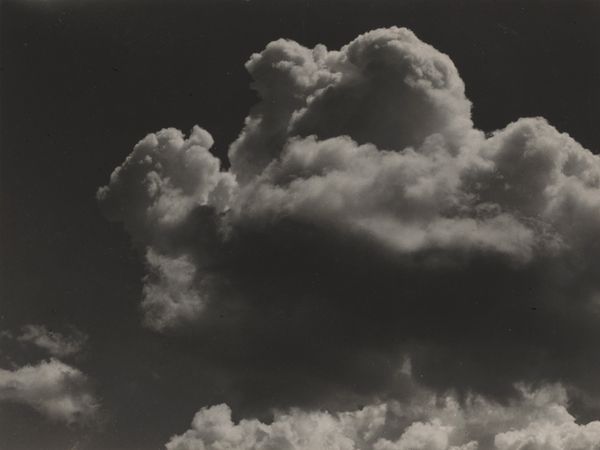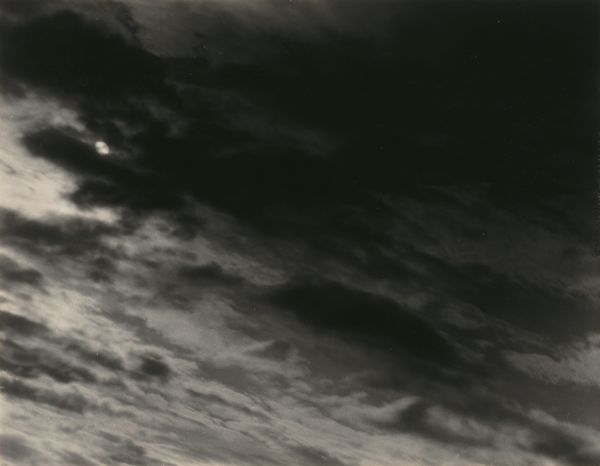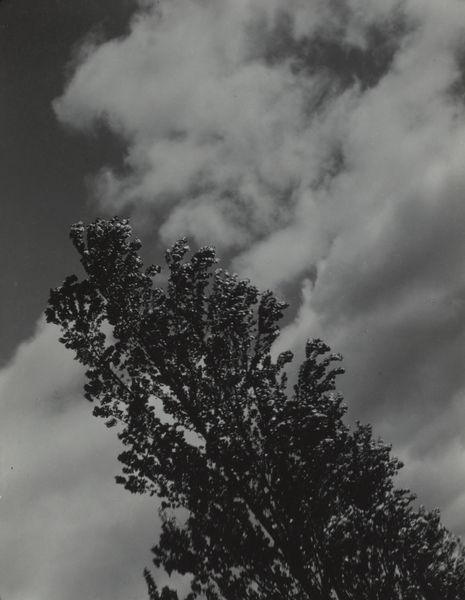
Dimensions: sheet (trimmed to image): 9.1 x 11.8 cm (3 9/16 x 4 5/8 in.) mount: 34.3 x 27.2 cm (13 1/2 x 10 11/16 in.)
Copyright: National Gallery of Art: CC0 1.0
Curator: This is "Songs of the Sky and Trees," a gelatin-silver print by Alfred Stieglitz, taken around 1923. Editor: It's surprisingly calming. The contrast between the stark, dark tree and the soft, blurred clouds evokes a real sense of quiet. Curator: Stieglitz was deeply invested in elevating photography to the level of fine art. These cloud studies, or "Equivalents" as he called them, were part of his effort to express inner emotions and abstract ideas through purely photographic means. Think about how he’s distancing the artistic intent from the material world itself, reaching for something beyond. Editor: So, the materials become almost secondary to the emotional landscape he's constructing? It's interesting because gelatin-silver prints themselves were becoming increasingly standardized, part of a mass-produced visual culture at that time. Was Stieglitz grappling with that standardization, trying to reclaim artistry through subject matter? Curator: Absolutely. There's a tension here. On one hand, you have this very modern, almost industrial material, and on the other, Stieglitz uses it to capture something deeply personal, even spiritual. He's manipulating the medium, and challenging established hierarchies that denigrated photography's artistic possibilities in its industrial moment. Editor: The monochrome really throws the focus onto the textures. You can almost feel the weight of the tree against the lightness of the sky. How do you read the title in relation to that juxtaposition? Curator: The title invites a synesthetic reading—we're not just seeing a landscape but also hearing its "songs." This perhaps links the work to transcendentalist thought, seeing nature as a conduit for deeper understanding. It suggests both the groundedness of the trees and the boundless freedom of the sky – nature reflecting all. Editor: Thinking about it materially, he’s not just depicting nature, he's imprinting it. The chemical process itself is recording light and shadow. Curator: It underscores how materials are more than just neutral tools; they are imbued with social and cultural meanings, even in supposedly objective representations of nature. Editor: It definitely prompts me to think differently about both photography's past and its future. Curator: Agreed. The legacy of 'Songs of the Sky and Trees' invites a deep conversation about art, technology, and representation.
Comments
No comments
Be the first to comment and join the conversation on the ultimate creative platform.
